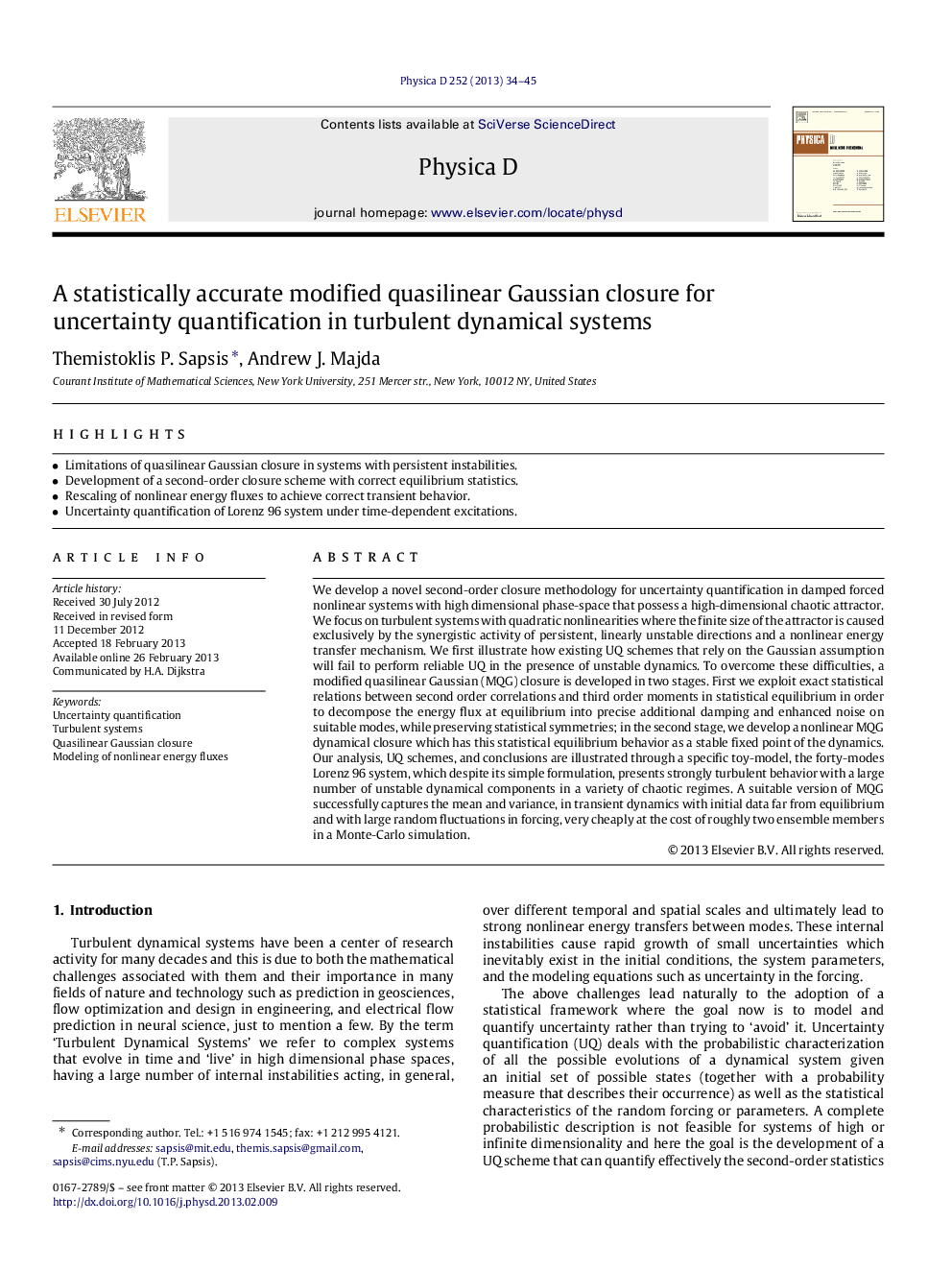| Article ID | Journal | Published Year | Pages | File Type |
|---|---|---|---|---|
| 1896518 | Physica D: Nonlinear Phenomena | 2013 | 12 Pages |
•Limitations of quasilinear Gaussian closure in systems with persistent instabilities.•Development of a second-order closure scheme with correct equilibrium statistics.•Rescaling of nonlinear energy fluxes to achieve correct transient behavior.•Uncertainty quantification of Lorenz 96 system under time-dependent excitations.
We develop a novel second-order closure methodology for uncertainty quantification in damped forced nonlinear systems with high dimensional phase-space that possess a high-dimensional chaotic attractor. We focus on turbulent systems with quadratic nonlinearities where the finite size of the attractor is caused exclusively by the synergistic activity of persistent, linearly unstable directions and a nonlinear energy transfer mechanism. We first illustrate how existing UQ schemes that rely on the Gaussian assumption will fail to perform reliable UQ in the presence of unstable dynamics. To overcome these difficulties, a modified quasilinear Gaussian (MQG) closure is developed in two stages. First we exploit exact statistical relations between second order correlations and third order moments in statistical equilibrium in order to decompose the energy flux at equilibrium into precise additional damping and enhanced noise on suitable modes, while preserving statistical symmetries; in the second stage, we develop a nonlinear MQG dynamical closure which has this statistical equilibrium behavior as a stable fixed point of the dynamics. Our analysis, UQ schemes, and conclusions are illustrated through a specific toy-model, the forty-modes Lorenz 96 system, which despite its simple formulation, presents strongly turbulent behavior with a large number of unstable dynamical components in a variety of chaotic regimes. A suitable version of MQG successfully captures the mean and variance, in transient dynamics with initial data far from equilibrium and with large random fluctuations in forcing, very cheaply at the cost of roughly two ensemble members in a Monte-Carlo simulation.
